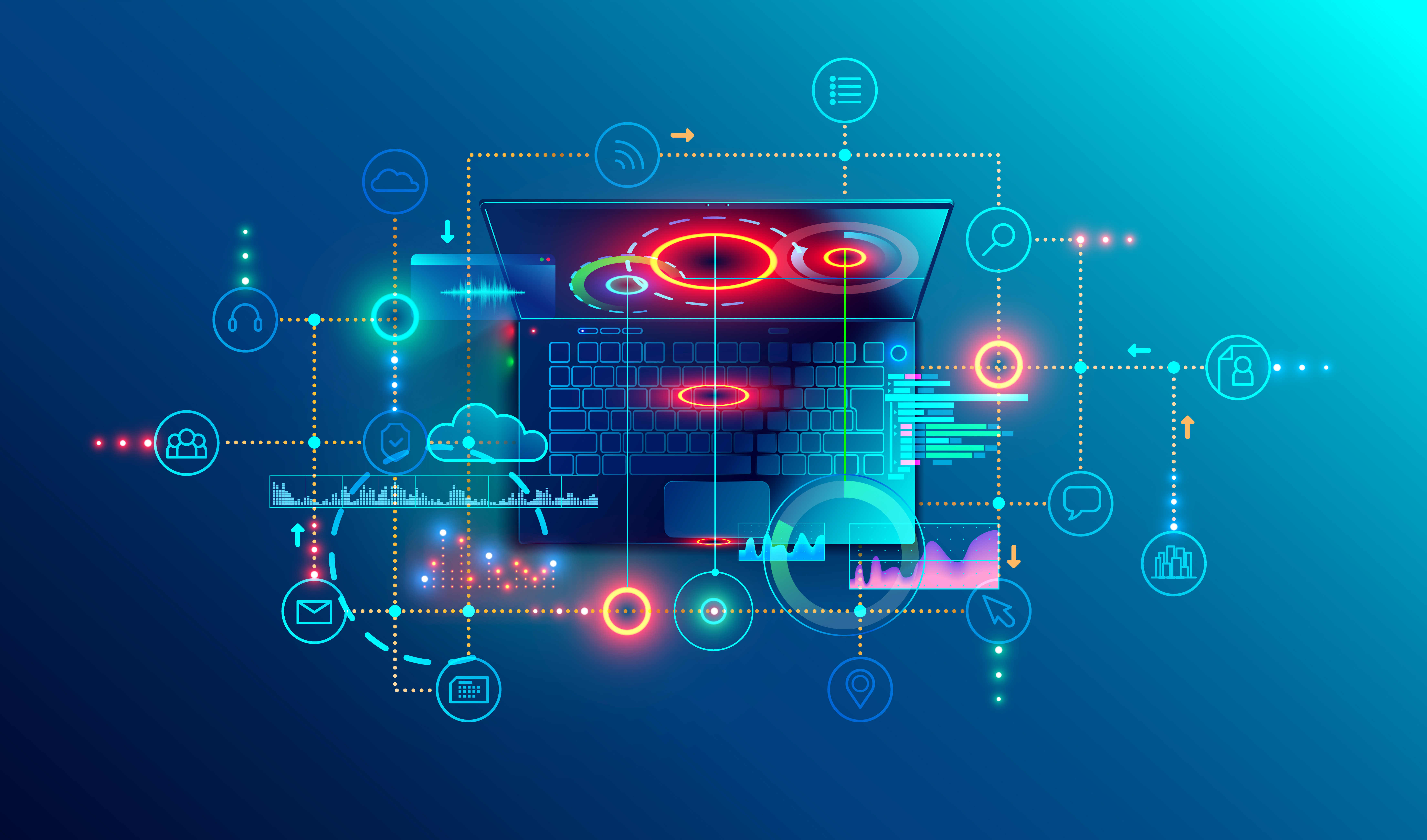
“Digital transformation” isn’t just a buzzword anymore.
Some companies treat it as a buzzword and nothing more. They talk about digital transformation without having any real digital transformation initiatives. These are likely the same companies that talk about their “disruptive technologies” that aren’t disrupting anything.
But an increasing number of businesses are recognizing the value proposition of digital transformation. They’re putting meaningful resources into actual digital transformation projects.
We’ve discussed digital transformation at length in this space. If you’re just joining us, we define “digital transformation” as...
the process of organizational change brought about by the use of
digital technologies and business models to improve performance.
It’s not just about taking paper documents and putting them online—it’s about reimagining business processes in a digital world.
Digital transformation isn’t easy. It’s hard enough to improve a business process without developing a digital solution to implement it. But for companies that adopt it early and get it right, digital transformation can provide a competitive advantage by enabling them to deliver products and services faster, with higher quality and lower costs.
The more components of a business process that can be digitally transformed, the better. More companies are adopting a goal of end-to-end digital transformation: Applying digital transformation to all phases of a given business process.
Example: Forecast-to-Stock
By way of a hypothetical example, consider a well-known business process for manufacturers: the forecast-to-stock (F2S) process.
In this process, the business takes information from demand forecasts and uses it to plan manufacturing activities, such as resource planning, raw material procurement, and production order execution. The “to-stock” part of F2S means the products are not manufactured in response to actual demand; they are manufactured according to anticipated demand and are shipped as the sales orders come in.
F2S is successful when:
- Finished goods manufactured equal actual demand, with no backorders and no products aging on warehouse shelves. Inventory is minimized while still meeting customer demand.
- Finished goods are manufactured to the expected level of quality the first time with no re-work or scrap due to quality issues.
- Manufacturing resources, including people and machines, operate at full capacity; no idle machines or workers, minimal unplanned downtime, and no worker overtime.
- Raw materials and semi-finished goods are available on a “just-in-time” basis. There are no manufacturing delays due to lack of upstream materials, and no such materials sit on shelves waiting to be consumed.
Optimizing F2S with End-to-End Digital Transformation
The F2S process is quite mature at many manufacturers’ around the world. You might think all the possible efficiency optimizations have already been baked into the process. What’s left to improve?
It turns out there’s quite a bit that digital transformation can do for the F2S process. Here are just a few examples:
- Forecasting – Traditionally, forecasting customer demand has been part art, part science, and part dumb luck. Predicting the future is notoriously difficult, and working crystal balls are scarce. The next best thing is a big-data trick known as predictive analytics. With the right design and enough historical data to work with, these specialized algorithms can predict market conditions with much more accuracy than can a human marketing analyst (or even a team of analysts) staring at spreadsheets.
- Planning and scheduling – Manufacturing planning can be an extraordinarily difficult task, especially for manufacturers with limited resources to be shared within and across product lines. How do you manufacture enough of your products to meet expected demand, when different production orders require the same workers and machines?
- Sophisticated planning software can take much of the guesswork out of the equation. Planning software can take the forecasts and generate, schedule, and prioritize production orders accordingly, taking into account planned maintenance, holidays, and other factors. This can optimize capacity utilization and eliminate conflicts among production orders for shared resources. The system can also automatically reorder raw materials on the basis of current stock levels and supplier lead times.
- Process automation – Many production lines already have a high degree of automation, but there are numerous ways in which the use of robotic process automation can be expanded:
- Material picking – Warehouse robots can take the bill of materials (BOM) for a production order, pick the needed materials from their storage locations, and deliver them to the assembly line, neatly organized, verified, and ready for use.
- Process monitoring – Industrial internet-of-things (IIoT) systems include sensors that can monitor myriad aspects of the production process in real-time and can calculate and display key performance metrics on any device, from mobile phones to large-format monitors. Immediate, visible alerts can inform personnel when there’s a problem with any part of the process, so it can be corrected with minimal downtime and quality impact.
- Quality monitoring – Manufactured goods themselves can be monitored for quality issues, using computer vision and deep-learning technologies enabling the system to visually inspect each unit and identify those with quality problems. The data gathered can be combined with the process monitoring data to identify the root cause of the problem.
- Finishing and packaging – Some companies rely on humans to assemble components into finished goods; packaging and labeling them in preparation for stocking. This is a tedious, error-prone process for which robots are much better suited. Not every product can be finished and packaged using robotics, but the list is growing all the time.
- At the end of the production process, the same warehouse robots that picked and delivered the raw materials can take the finished goods and put them away on the warehouse shelves, ready to fulfill customer orders.
One Example Among Many
F2S is just one example. Many other business processes can be digitally transformed, and some already have been.
Consider on-demand transportation:
For decades, taxis were dispatched by humans. They took phone calls and radioed the requests to taxi drivers, hoping one would be available in the area. Uber and Lyft eliminated both the phone call and the uncertainty of service delivery with a system that directly matched ride requests with available drivers, relying heavily on the geolocation data provided by both riders’ and drivers’ mobile devices. The increased quality of service and reduced costs afforded by this digital transformation have shaken the traditional taxi industry.
Food delivery has also been digitally transformed. By enabling online ordering, order accuracy has increased, and third-party delivery services such as Doordash® and Postmate™ have eliminated the need for restaurants to employ on-staff drivers. (The related costs for vehicles, insurance, and maintenance are also lowered or eliminated.). This digital transformation has been a huge win for all stakeholders.
Digital Transformation: The Next Wave
Digital transformation can drive efficiency and productivity, enabling companies to do more with the same resources. Process and quality monitoring can provide real-time data about a production process and enable staff to nip problems in the bud. Automation can reduce errors while freeing human workers for more creative and innovative activities.
In short, digital transformation is the next step in the evolution of business. Those who embrace digital transformation and do it right will succeed; those who do not may find themselves struggling to compete.
Is your company ready for digital transformation?


















